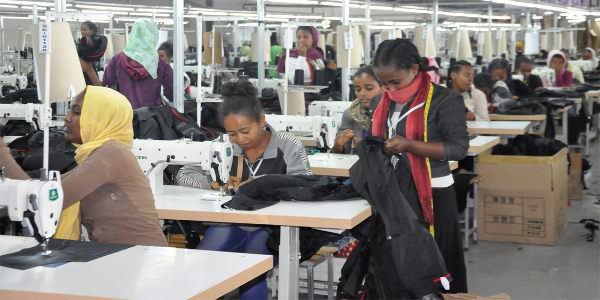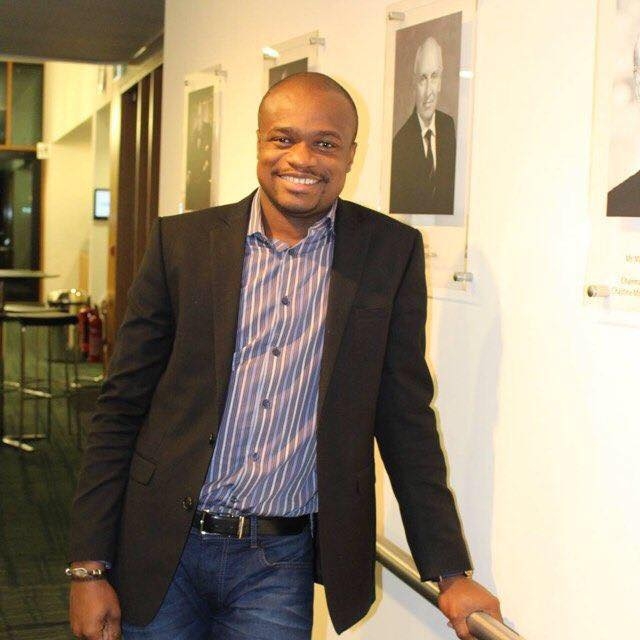At this year’s World Economic Forum on Africa, Johan Aurik, managing partner and chairman of consulting firm A.T. Kearney, described local manufacturing in Africa as an enormous “missed opportunity”.
We have heard it all before. At just about every conference centred on the African economy, you will likely come across a panel discussion of experts stating the obvious: Africa needs to add value to its own resources in order to reap greater economic benefits. And yet the continent remains an importer of most finished goods – from processed food to the simple tooth pick.
In fact, the continent might actually be less industrialised than it was four decades ago, as pointed out by Masimba Tafirenyika, who heads the Africa section of the United Nations’ Department of Public Information. Evidence of this is the contribution of Africa’s manufacturing sector it its GDP – which declined from 12% in 1980 to 11% in 2013, according to the UN Economic Commission for Africa. It is clear that the issue requires less talk and more action.
Over the course of 2016, How we made it in Africa has spoken to a number of entrepreneurs who have risen to the manufacturing challenge. They have all started small, without huge sources of funding, and are producing goods to compete with foreign imports.
Here is their practical advice for anyone that hopes to join them.
Don’t rely on investors
For Johan Eksteen, a South African manufacturer of pelletising machinery (used to make animal feed), the best advice is to try get an operation off the ground without requiring external investment. This is especially relevant in the African context where there is a shortage of funding.
“If you are going to start a business based on the fact that you need money from investors, you probably won’t be able to ever start that business. To be an entrepreneurial success you need to get cash flow into your business – not from banks and investors, but from product sales,” he explains.
“If you can only manufacture that very first product… then sell it and reinvest into the second round of manufacturing. Most people think they need investment to do this – but who will give you money if you haven’t tested the market?”
Ghanaian Ivy Appiah, founder of the food and beauty manufacturing company Tiwajo Industry Limited, agrees. She started her company by manufacturing yogurt, using the tools available in her mother’s kitchen.
She says it is easy for aspiring manufacturers to quickly get put off by the cost of setting up a factory, with expensive machinery and warehousing. But she advises them to start by first improvising with what they already have.
“For someone who has just come out of school… you don’t have what it takes [to buy costly manufacturing machines]. But you have to start,” she said at a TEDxAccra event.
“There are some simple beginnings to consider. Start with what you know and apply your ability – just putting in what you have learned or know already. Make the whole process simple.”
Have a contingency plan
Last month we spoke to Saheel Shah, co-founder of Adpack, a Kenyan manufacturer of gunny bags, who described how his factory was sabotaged by a competitor within the first few weeks of operation. The incident managed to shut down operations for three weeks, as it took time to import spare parts for damaged machinery. For Shah, it was a lesson in why manufacturers should, where possible, prepare for the worst – for example, by keeping stock of spare parts.
Kasope Ladipo-Ajai – co-founder of the Nigerian food-flavourant processor, OmoAlata Food Services – learned a similar lesson. A few years ago she ran a three-day promotion on the online market platform DealDey, where customers could buy two of her products and get one free. She received far more orders than she was prepared for, and then her processing machine broke down. She was stuck with promises she could not keep and had to deal with angry customers wondering why they hadn’t received their orders yet.
“I learned that when you are trying anything new, you have to prepare for the worst, because for some reason it is always at those times that things go wrong,” she says.
“We have since grown from that and now always have a ‘Plan B’. For example, we have two or three delivery guys on standby just in case the one has an accident. We prepare for stuff like that because otherwise it can really destabilise you.”
Rohan Garg – co-founder of a mineral water-bottling company in Niger, Belvie – also regrets not being prepared for the worst when he started the company.
“Due to the lack of experience I had, we didn’t account for any contingency during the financial and operational planning of the project. While setting up the factory, we ran into obstacles that dragged the timeline of the project and added to the project costs. As a lesson learned from this, it is always prudent to allot a certain amount of capital towards contingency and delays, as these markets are in essence highly uncertain to operate in.”
Having contingency plans in place can reduce the chances of letting down new customers and clients.
“You don’t want [people’s] first experience with you to be so bad that they never come back… So don’t bite off more than you can chew,” warns Ladipo-Ajai.
So, as Shah says: “Rather over-promise and under-deliver.”
Budget in your working capital
This can be a crippling lesson to learn the hard-way – and many first time manufacturers have had to.
The reality is that a lot of retailers and clients do not pay for new products upfront, and it can often take up to 90 days before manufacturers receive payment for their products. In Uganda, for example, east African supermarket chain Nakumatt can take between 180 and 270 days to pay its suppliers.
Ladipo-Ajai warns: “You need to make sure that you budget in your working capital. You can’t spend all your money on the factory setup and production and not have working capital because you will fail.
“I think a lot of small businesses fall into that trap. They don’t budget for working capital and then you get stuck and basically their investment dies because they don’t have money to sustain it – especially if they have put in everything they have or used a loan.”
Know your customer
Understanding who your customer or client is, what their needs are, and how they operate is extremely important for any manufacturer – whether they are supplying retailers or targeting a certain consumer segment.
Wanjiru Waweru, founder of FunKidz, manufactures children’s furniture in Kenya. She has made sure she understands when parents are most likely to buy kids’ future, as well as what colours and shapes appeal to children, to better target her customer.
Eksteen attributes the success of his pelletisers in African markets to understanding the distinct needs of smallholder farmers and adapting his pelletisers to address them. For example, his company manufactures smaller pelletisers that run on single-phase power (the kind found in most homes), addressing power supply constraints. This has put him ahead of many foreign importers.
According to Garg, getting to know his clients (retailers) has been one of the most important lessons he has learned in manufacturing.
“The time that I spent interacting with retailers and shopkeepers throughout my stay in Niger was instrumental in developing a deep understanding of their values, preferences and practices… [I] have learned a lot from my discussions with many traditional traders and retailers that have been serving these markets for generations.”
Credit: howwemadeitinafrica.com





